Machinability of INCONEL718 Alloy with a Porous Microstructure Produced by Laser Melting Powder Bed Fusion at Higher Energy Densities
Abstract
1. Introduction
- Fabrication of AM IN718 tube samples with different levels of spherical porosity by varying the laser energy density within the stable and higher energy density range.
- Instrumented machining to measure cutting forces in the orthogonal turning of tube samples performed under light cut conditions to simulate a finishing process. The feed motion is along the length of the tube axis and the width of cut across the full tube thickness, performed under dry cut (no coolant) conditions.
- Microhardness and porosity analysis of the AM tube samples on a plane perpendicular to the direction of the feed motion of the cutting tool.
- Machining of the same alloy grade produced as a wrought (extruded) tube product to compare the machinability of the alloy produced by the two fabrication methods.
2. Experimental Preparations for Additive Manufacturing and Machining
2.1. Methods and Materials
2.2. Machining Setup, Process Parameters, and Cutting Tool
3. Results and Discussion
4. Conclusions
Author Contributions
Funding
Conflicts of Interest
References
- Schirra, J.J.; Viens, D.V. Metallurgical Factors Influencing the Machinability of Inconel 718. Superalloys 718, 625, 706 and Various Derivates; Loria, E.A., Ed.; The Minerals, Metals & Materials Society: Warrendale, PA, USA, 1994; pp. 827–838. [Google Scholar]
- Barker, J.F. The Initial Years of Alloy 718—A GE Perspective. In Superalloy 718 Metallurgy and Applications, TMS; Springer: Cham, Switzerland, 1989; pp. 269–277. [Google Scholar]
- Loria, E.A. Superalloy 718: Metallurgy and Applications. In Proceedings of the International Symposium on the Metallurgy and Applications of Superalloy 718; Minerals, Metals & Materials Society: Pittsburgh, PA, USA; Springer: Cham, Switzerland, 1989; ISBN 9780873390972. [Google Scholar]
- Hosseini, E.; Popovich, V.A. A review of mechanical properties of additively manufactured Inconel 718. Addit. Manuf. 2019, 30, 100877. [Google Scholar] [CrossRef]
- Jindal, P.C.; Santhanam, A.T.; Schleinkofer, U.; Shuster, A.F. Performance of PVD TiN, TiCN, and TiAlN coated cemented carbide tools in turning. Int. J. Refract. Met. Hard Mater. 1999, 17, 163–170. [Google Scholar] [CrossRef]
- Kaynak, Y.; Tascioglu, E. Finish machining-induced surface roughness, microhardness and XRD analysis of selective laser melted Inconel 718 alloy. Procedia CIRP 2018, 71, 500–504. [Google Scholar] [CrossRef]
- Kaynak, Y. Evaluation of machining performance in cryogenic machining of Inconel 718 and comparison with dry and MQL machining. Int. J. Adv. Manuf. Technol. 2014, 72, 919–933. [Google Scholar] [CrossRef]
- Pusavec, F.; Hamdi, H.; Kopac, J.; Jawahir, I.S. Surface integrity in cryogenic machining of nickel based alloy—Inconel 718. J. Mater. Process. Technol. 2011, 211, 773–783. [Google Scholar] [CrossRef]
- Arrazola, P.J.; Kortabarria, A.; Madariaga, A.; Esnaola, J.A.; Fernandez, E.; Cappellini, C.; Ulutan, D.; Özel, T. On the machining induced residual stresses in IN718 nickel-based alloy: Experiments and predictions with finite element simulation. Simul. Model. Pract. Theory 2014, 41, 87–103. [Google Scholar] [CrossRef]
- Cantero, J.; Díaz-Álvarez, J.; Infante-García, D.; Rodríguez, M.; Criado, V. High Speed Finish Turning of Inconel 718 Using PCBN Tools under Dry Conditions. Metals 2018, 8, 192. [Google Scholar] [CrossRef]
- Cantero, J.L.; Díaz-Álvarez, J.; Miguélez, M.H.; Marín, N.C. Analysis of tool wear patterns in finishing turning of Inconel 718. Wear 2013, 297, 885–894. [Google Scholar] [CrossRef]
- Aramcharoen, A.; Chuan, S.K. An experimental investigation on cryogenic milling of inconel 718 and its sustainability assessment. Procedia CIRP 2014, 14, 529–534. [Google Scholar] [CrossRef]
- Ramirez-Cedillo, E.; Sandoval-Robles, J.A.; Ruiz-Huerta, L.; Caballero-Ruiz, A.; Rodriguez, C.A.; Siller, H.R. Process planning guidelines in selective laser melting for the manufacturing of stainless steel parts. Procedia Manuf. 2018, 26, 973–982. [Google Scholar] [CrossRef]
- Díaz-Álvarez, J.; Díaz-Álvarez, A.; Miguélez, H.; Cantero, J. Finishing Turning of Ni Superalloy Haynes 282. Metals 2018, 8, 843. [Google Scholar] [CrossRef]
- Díaz-Álvarez, J.; Tapetado, A.; Vázquez, C.; Miguélez, H. Temperature measurement and numerical prediction in machining inconel 718. Sensors 2017, 17, 1531. [Google Scholar] [CrossRef] [PubMed]
- Kramer, B.M. On Tool Materials for High Speed Machining. J. Eng. Ind. 1987, 109, 87–91. [Google Scholar] [CrossRef]
- Narutaki, N.; Yamane, Y.; Hayashi, K.; Kitagawa, T.; Uehara, K. High-speed Machining of Inconel 718 with Ceramic Tools. CIRP Ann. 1993, 42, 103–106. [Google Scholar] [CrossRef]
- Hou, Z.B.; Komanduri, R. Modelling Of Thermomechanical Shear Instability in Machining. Science 1997, 39, 1273–1314. [Google Scholar]
- Attaran, M. The rise of 3-D printing: The advantages of additive manufacturing over traditional manufacturing. Bus. Horiz. 2017, 60, 677–688. [Google Scholar] [CrossRef]
- Godina, R.; Ribeiro, I.; Matos, F.; Ferreira, B.T.; Carvalho, H.; Peças, P. Impact assessment of additive manufacturing on sustainable business models in industry 4.0 context. Sustainability 2020, 12, 7066. [Google Scholar] [CrossRef]
- Otubusin, A.; Wood, P. Analysis of Parameters Influencing Build Accuracy of a Slm. In Proceedings of the ASME Turbo Expo 2018: Turbomachinery Technical Conference and Exposition, Oslo, Norway, 11–16 June 2018; pp. 1–10. [Google Scholar]
- Alvi, S.; Saeidi, K.; Akhtar, F. High temperature tribology and wear of selective laser melted (SLM) 316L stainless steel. Wear 2020, 448–449, 203228. [Google Scholar] [CrossRef]
- Huang, L.; Cao, Y.; Li, G.; Wang, Y. Microstructure characteristics and mechanical behaviour of a selective laser melted Inconel 718 alloy. J. Mater. Res. Technol. 2020, 3, 1–15. [Google Scholar] [CrossRef]
- Trosch, T.; Strößner, J.; Völkl, R.; Glatzel, U. Microstructure and mechanical properties of selective laser melted Inconel 718 compared to forging and casting. Mater. Lett. 2016, 164, 428–431. [Google Scholar] [CrossRef]
- Borisov, E.V.; Popovich, V.A.; Popovich, A.A.; Sufiiarov, V.S.; Zhu, J.-N.; Starikov, K.A. Selective laser melting of Inconel 718 under high laser power. Mater. Today Proc. 2020, 1–5. [Google Scholar] [CrossRef]
- Calvin Samuel, S.; Arivarasu, M.; Ram Prabhuc, T. High temperature dry sliding wear behaviour of laser powder bed fused Inconel 718. Addit. Manuf. 2019, 34, 127065. [Google Scholar]
- Popovich, A.A.; Sufiiarov, V.S.; Borisov, E.V.; Polozov, I.A.; Masaylo, D.V. Design and manufacturing of tailored microstructure with selective laser melting. Mater. Phys. Mech. 2018, 38, 1–10. [Google Scholar]
- Moussaoui, K.; Rubio, W.; Mousseigne, M.; Sultan, T.; Rezai, F. Effects of Selective Laser Melting additive manufacturing parameters of Inconel 718 on porosity, microstructure and mechanical properties. Mater. Sci. Eng. A 2018, 735, 182–190. [Google Scholar] [CrossRef]
- Hooper, P.A. Melt pool temperature and cooling rates in laser powder bed fusion. Addit. Manuf. 2018, 22, 548–559. [Google Scholar] [CrossRef]
- DebRoy, T.; Wei, H.L.; Zuback, J.S.; Mukherjee, T.; Elmer, J.W.; Milewski, J.O.; Beese, A.M.; Wilson-Heid, A.; De, A.; Zhang, W. Additive manufacturing of metallic components—Process, structure and properties. Prog. Mater. Sci. 2018, 92, 112–224. [Google Scholar] [CrossRef]
- Zhang, D.; Feng, Z.; Wang, C.; Wang, W.; Liu, Z.; Niu, W. Comparison of microstructures and mechanical properties of Inconel 718 alloy processed by selective laser melting and casting. Mater. Sci. Eng. A 2018, 724, 357–367. [Google Scholar] [CrossRef]
- Qiu, C.; Adkins, N.J.E.; Attallah, M.M. Microstructure and tensile properties of selectively laser-melted and of HIPed laser-melted Ti-6Al-4V. Mater. Sci. Eng. A 2013, 578, 230–239. [Google Scholar] [CrossRef]
- Vayssette, B.; Saintier, N.; Brugger, C.; Elmay, M.; Pessard, E. Surface roughness of Ti-6Al-4V parts obtained by SLM and EBM: Effect on the High Cycle Fatigue life. Procedia Eng. 2018, 213, 89–97. [Google Scholar] [CrossRef]
- Renishaw Plc. Material Data Sheets. In 718-0405 Powder for Additive Manufacturing (AM250). Available online: http://resources.renishaw.com/en/download/data-sheet-in718-0405-powder-for-additive-manufacturing--94192 (accessed on 4 June 2020).
- Díaz-Álvarez, A.; Díaz-Álvarez, J.; Cantero, J.L.; Miguélez, H. Sustainable high-speed finishing turning of haynes 282 using carbide tools in dry conditions. Metals 2019, 9, 989. [Google Scholar] [CrossRef]
- Guo, S.; Sun, W.; Lu, D.; HU, Z. Effect of Minor Elements on Microstructure and Mechanical Properties of IN718 Alloy. In Superalloys 718, 625, 706 and Various Derivatives; Loria, E.A., Ed.; TMS: Pittsburgh, PA, USA, 1997; pp. 521–530. [Google Scholar]
- Oliaei, S.N.B.; Karpat, Y. Investigating the influence of friction conditions on finite element simulation of microscale machining with the presence of built-up edge. Int. J. Adv. Manuf. Technol. 2017, 90, 819–829. [Google Scholar] [CrossRef]
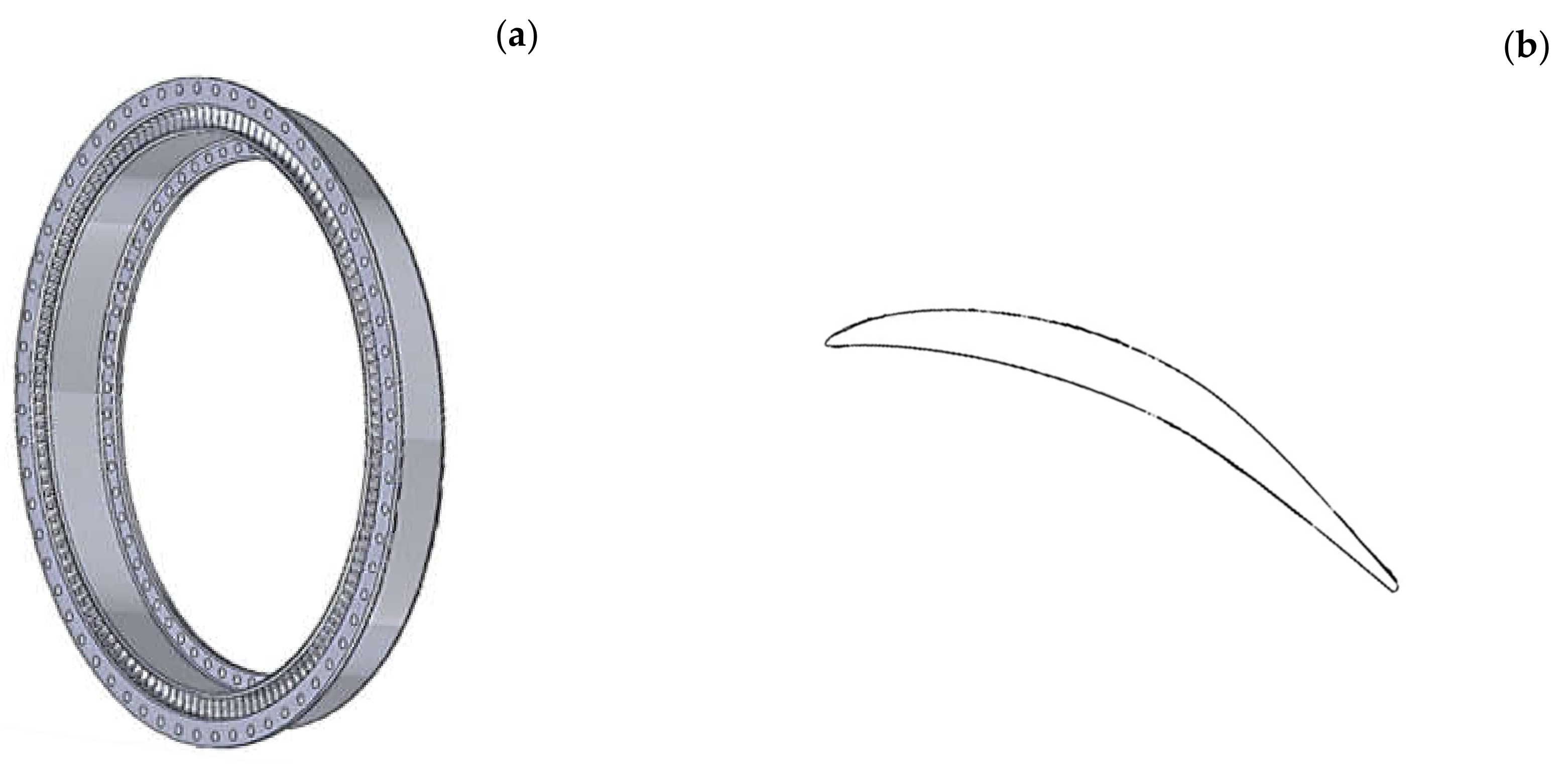
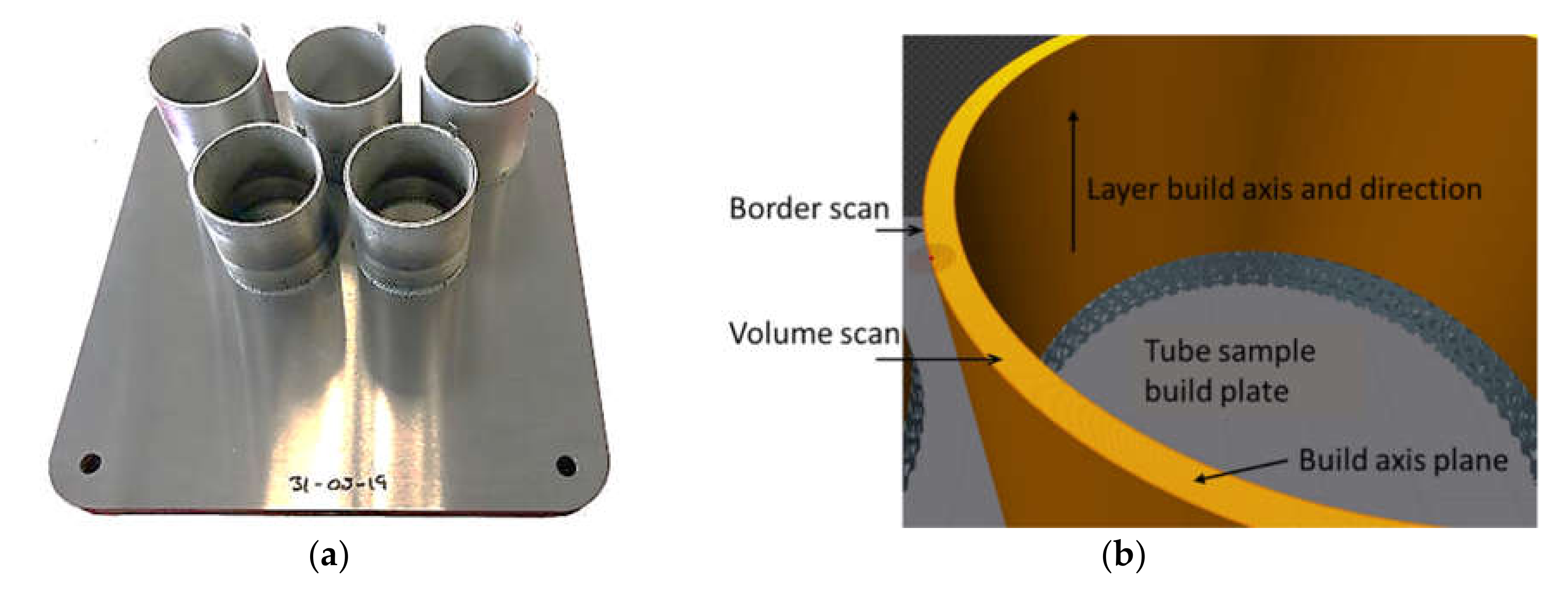
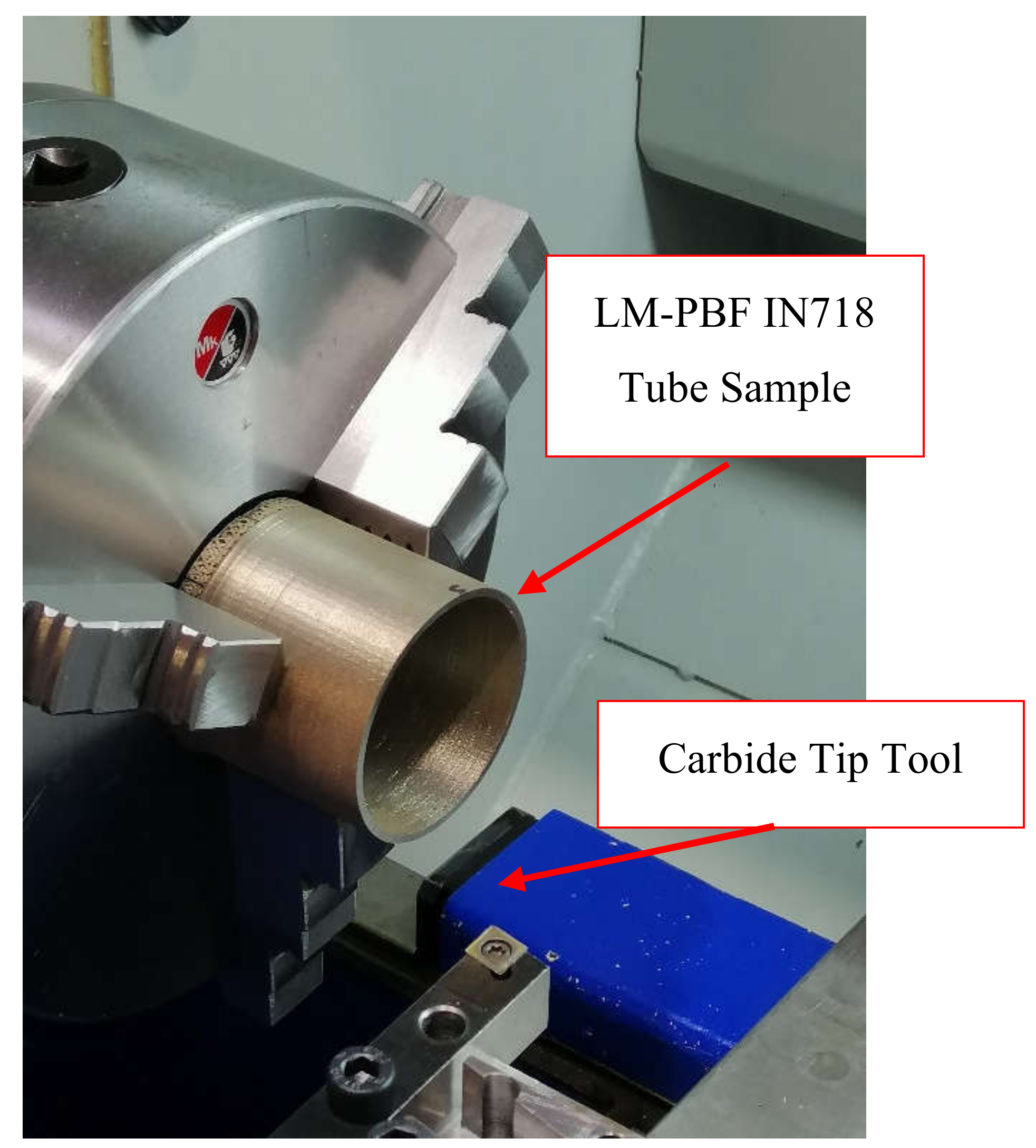
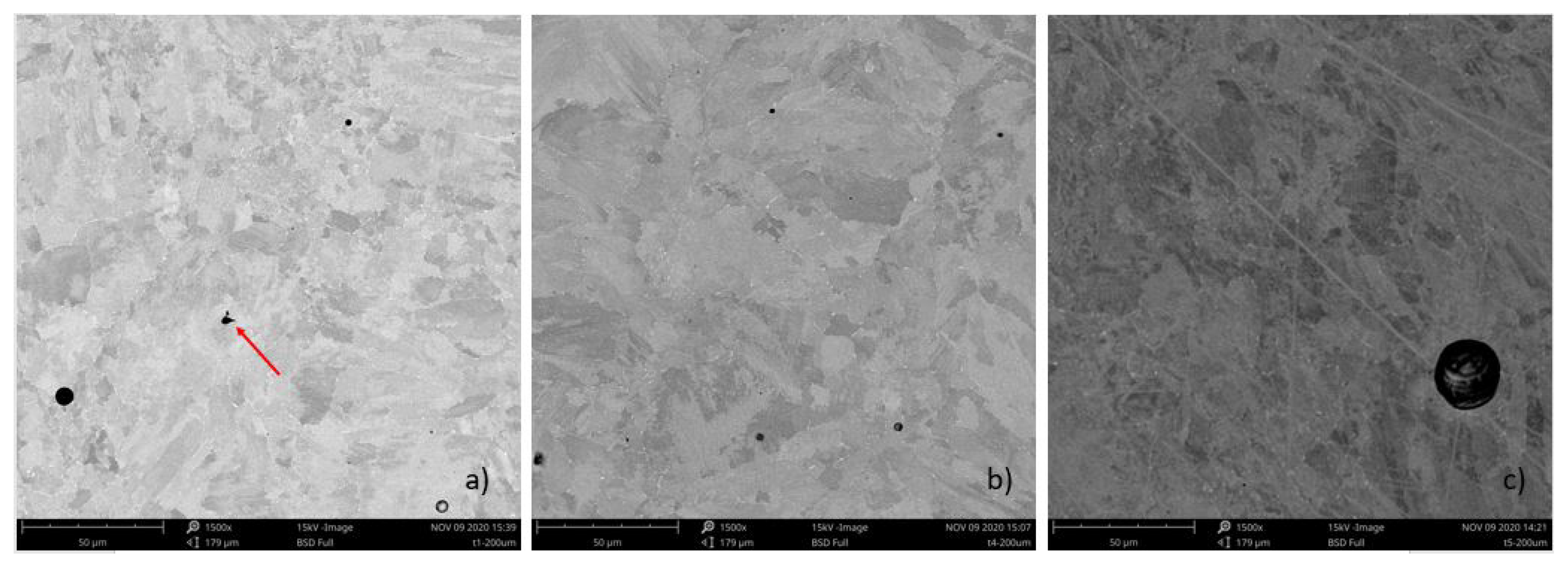

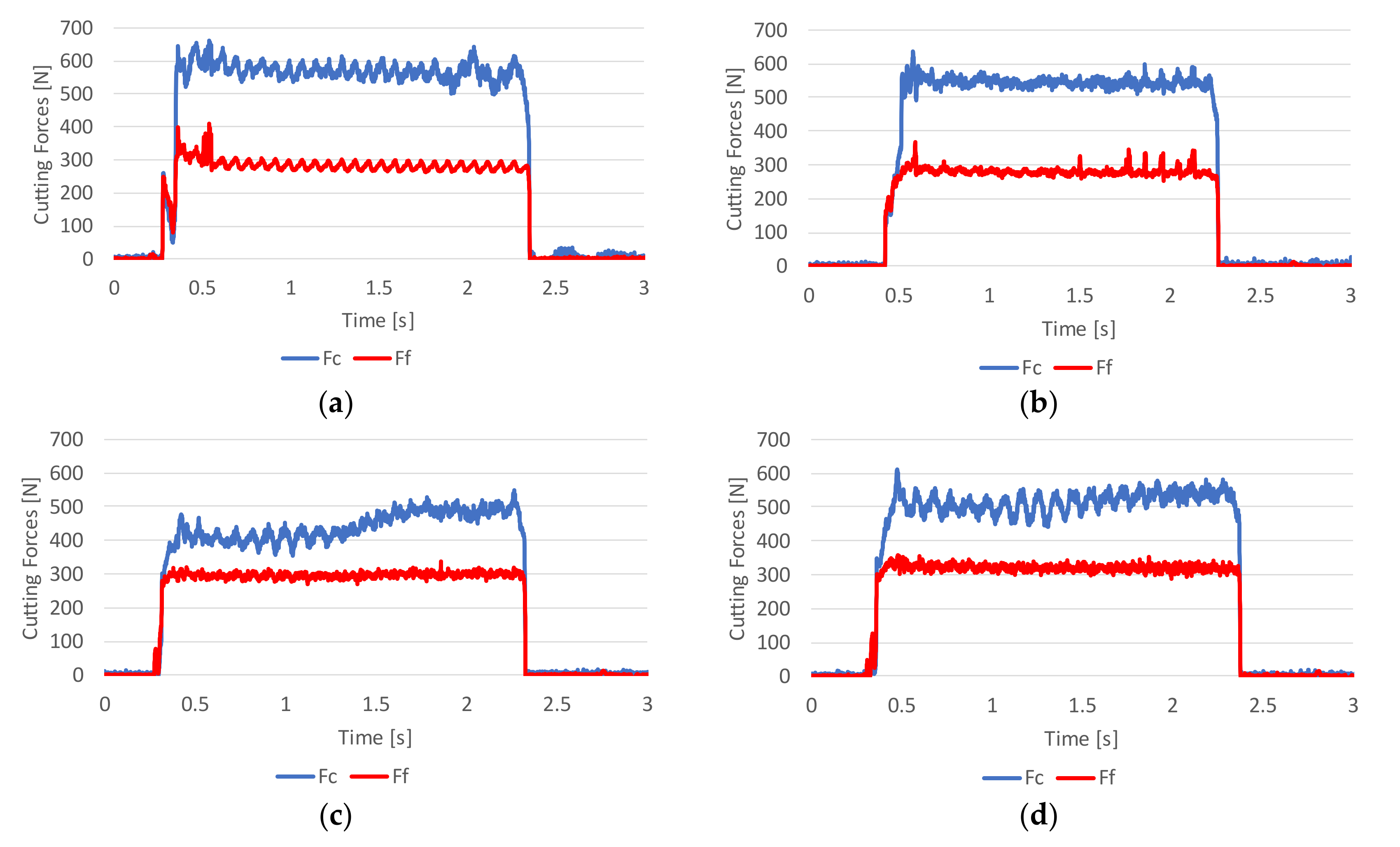
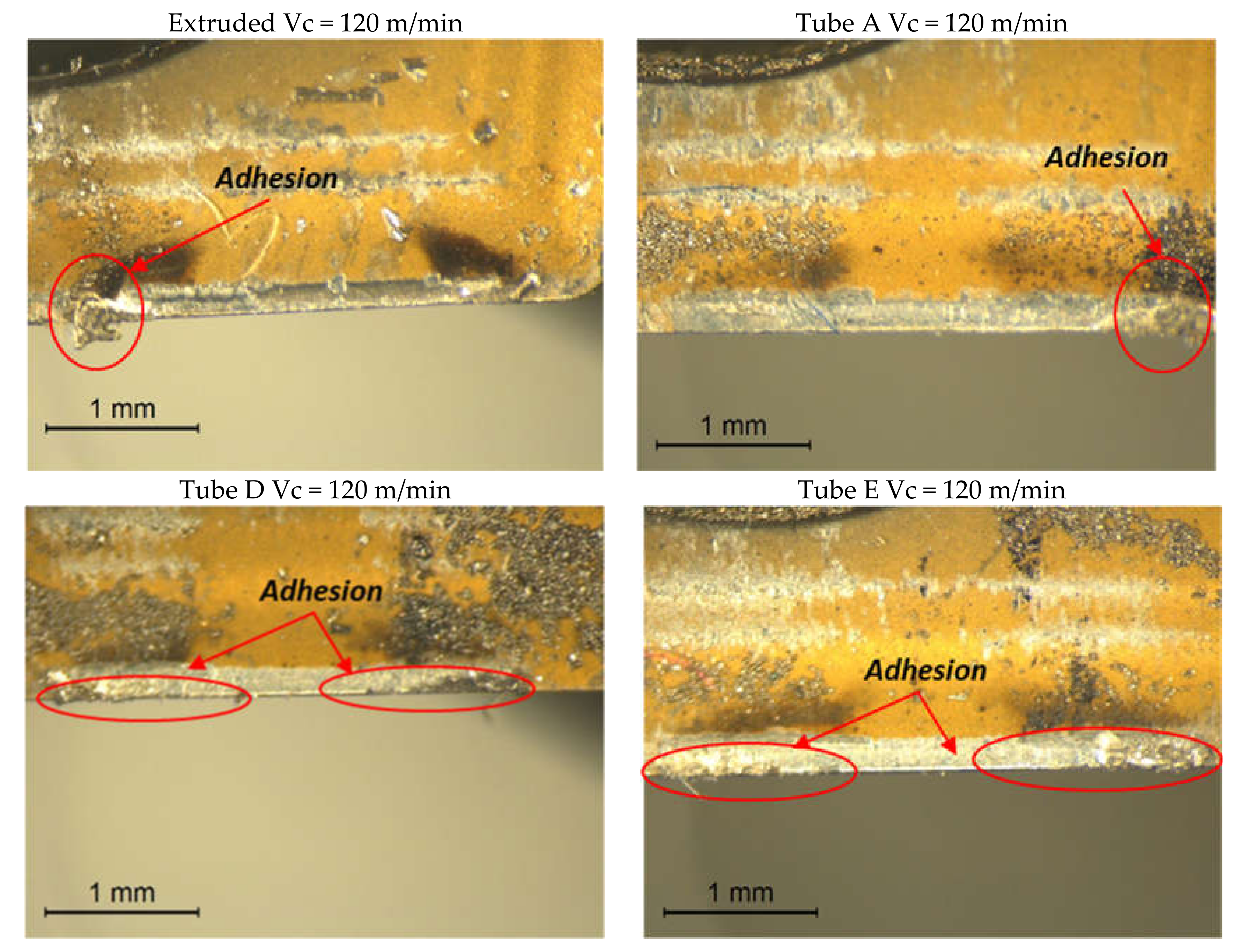
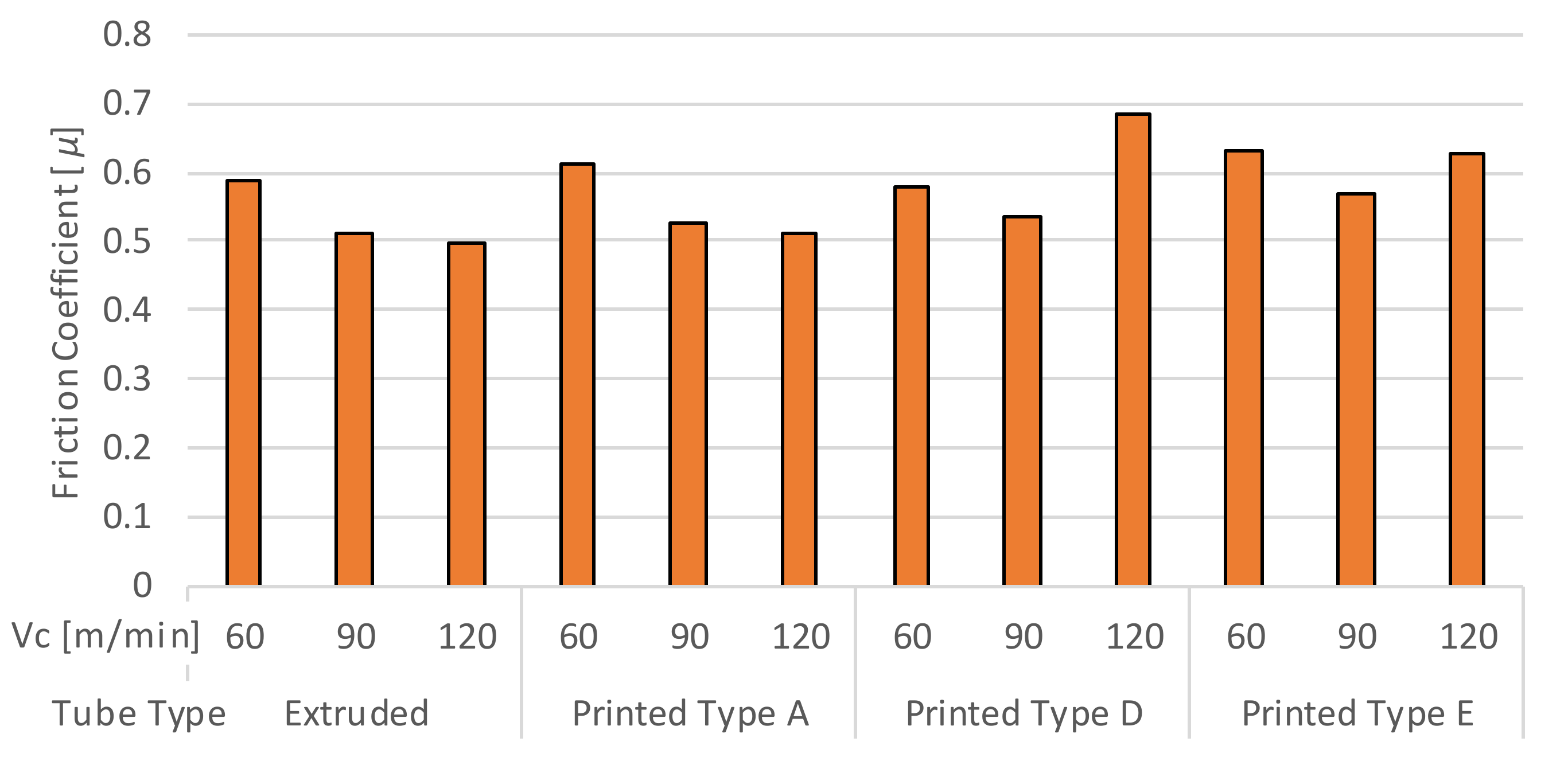

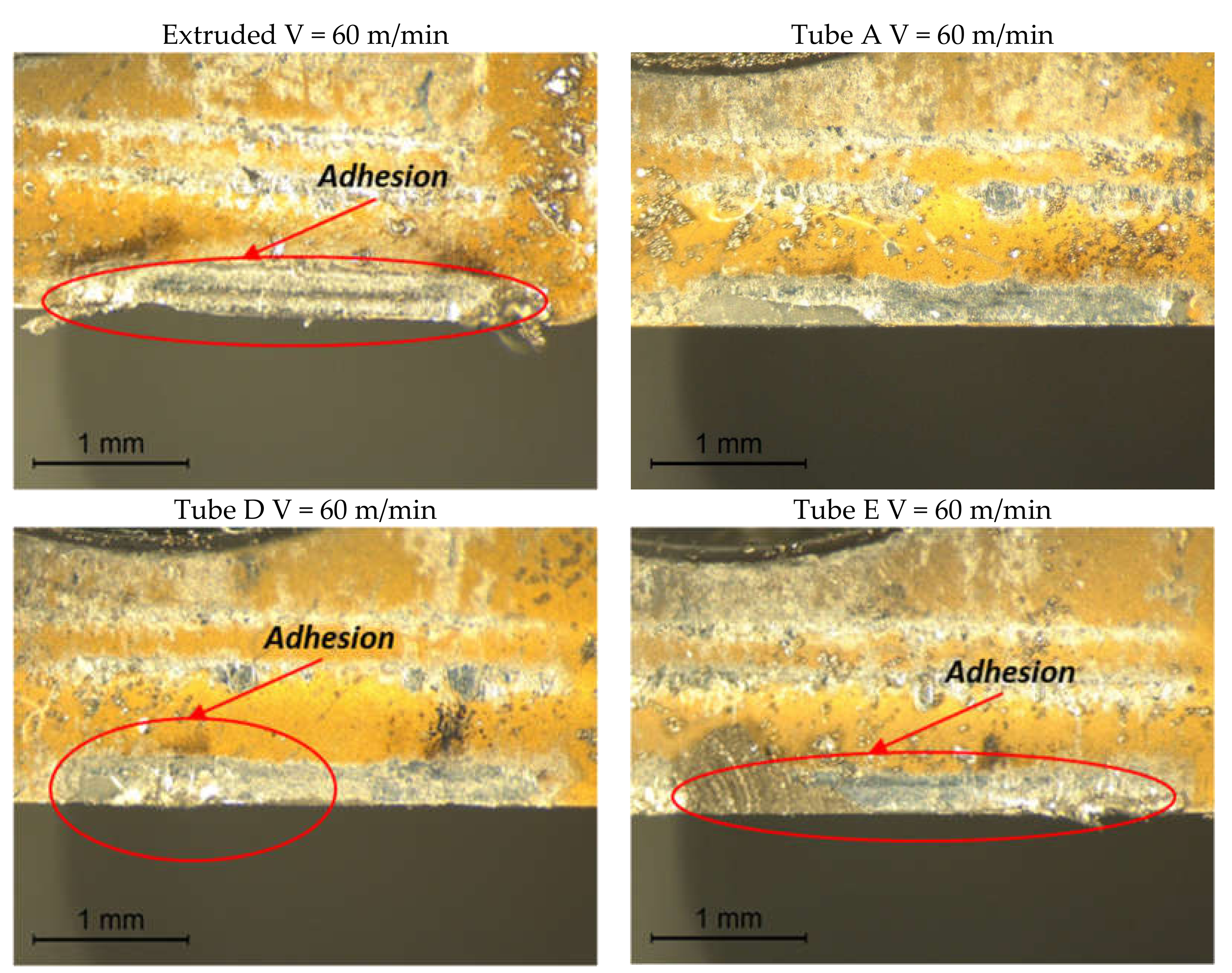
| LM-PBF Tube ID | Units | A | D | E | |||
|---|---|---|---|---|---|---|---|
| Fill | Border | Fill | Border | Fill | Border | ||
| Laser power | W | 200 | 175 | 175 | |||
| Exposure time | µs | 70 | 50 | 150 | 150 | 180 | 180 |
| Point distance | µm | 70 | 20 | 70 | 20 | 70 | 20 |
| Scan speed | mm/s | 1000 | 400 | 467 | 133 | 389 | 111 |
| Energy density | J/mm3 | 74.1 | 185 | 139 | 486 | 167 | 583 |
| LM-PFF Tube ID | Units | A | D | E | ||||||
|---|---|---|---|---|---|---|---|---|---|---|
| Sample Number | 1 | 2 | 3 | 1 | 2 | 3 | 1 | 2 | 3 | |
| Porosity | (%) | 0.07 | 0.10 | 0.09 | 0.49 | 0.14 | 0.28 | 3.29 | 4.01 | 2.98 |
| Average | (%) | 0.09 | 0.30 | 3.43 | ||||||
| Standard deviation | (%) | 0.01 | 0.14 | 0.43 | ||||||
| Sigma/Average | 0.22 | 0.46 | 0.13 | |||||||
| Element (m%) | Al | C | Co | Cr | Cu | Fe | Mn | Mo | Ni | S | Si | Ti |
|---|---|---|---|---|---|---|---|---|---|---|---|---|
| Extruded | 0.53 | 0.053 | 0.40 | 18.3 | 0.05 | 18.6 | 0.24 | 3.04 | 52.3 | <0.002 | 0.09 | 1.10 |
| LM-PBF | 0.47 | 0.053 | 0.09 | 18.4 | 0.01 | 18.0 | 0.01 | 3.08 | 53.7 | <0.003 | 0.03 | 0.95 |
| Renishaw powder (0405) [34] | 0.2 to 0.8 | 0.02 to 0.05 | <1.0 | 17.0 to 21.0 | <0.3 | Balance | <0.35 | 2.8 to 3.3 | 50.0 to 55.0 | <0.015 | <0.35 | 0.65 to 1.15 |
Publisher’s Note: MDPI stays neutral with regard to jurisdictional claims in published maps and institutional affiliations. |
© 2020 by the authors. Licensee MDPI, Basel, Switzerland. This article is an open access article distributed under the terms and conditions of the Creative Commons Attribution (CC BY) license (http://creativecommons.org/licenses/by/4.0/).
Share and Cite
Wood, P.; Díaz-Álvarez, A.; Díaz-Álvarez, J.; Miguélez, M.H.; Rusinek, A.; Gunputh, U.F.; Williams, G.; Bahi, S.; Sienkiewicz, J.; Płatek, P. Machinability of INCONEL718 Alloy with a Porous Microstructure Produced by Laser Melting Powder Bed Fusion at Higher Energy Densities. Materials 2020, 13, 5730. https://doi.org/10.3390/ma13245730
Wood P, Díaz-Álvarez A, Díaz-Álvarez J, Miguélez MH, Rusinek A, Gunputh UF, Williams G, Bahi S, Sienkiewicz J, Płatek P. Machinability of INCONEL718 Alloy with a Porous Microstructure Produced by Laser Melting Powder Bed Fusion at Higher Energy Densities. Materials. 2020; 13(24):5730. https://doi.org/10.3390/ma13245730
Chicago/Turabian StyleWood, Paul, Antonio Díaz-Álvarez, José Díaz-Álvarez, María Henar Miguélez, Alexis Rusinek, Urvashi F. Gunputh, Gavin Williams, Slim Bahi, Judyta Sienkiewicz, and Paweł Płatek. 2020. "Machinability of INCONEL718 Alloy with a Porous Microstructure Produced by Laser Melting Powder Bed Fusion at Higher Energy Densities" Materials 13, no. 24: 5730. https://doi.org/10.3390/ma13245730
APA StyleWood, P., Díaz-Álvarez, A., Díaz-Álvarez, J., Miguélez, M. H., Rusinek, A., Gunputh, U. F., Williams, G., Bahi, S., Sienkiewicz, J., & Płatek, P. (2020). Machinability of INCONEL718 Alloy with a Porous Microstructure Produced by Laser Melting Powder Bed Fusion at Higher Energy Densities. Materials, 13(24), 5730. https://doi.org/10.3390/ma13245730











